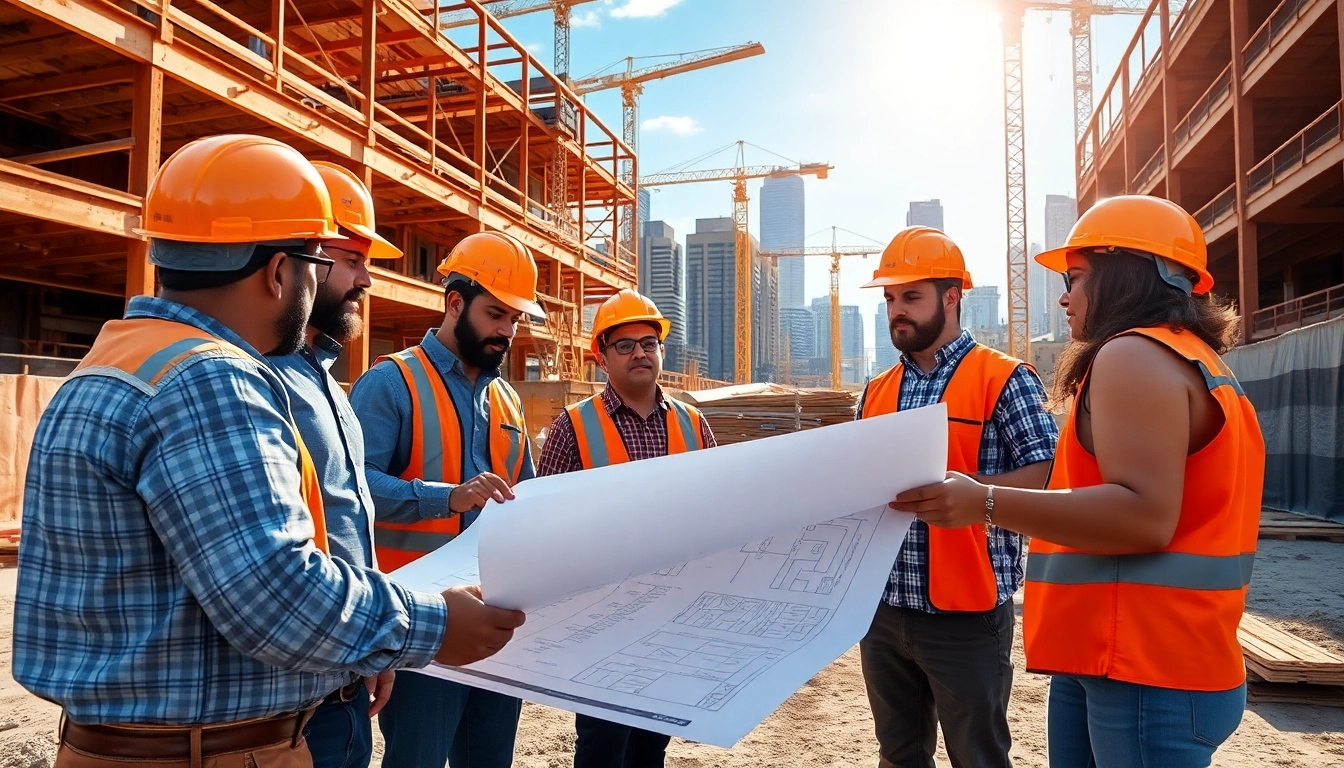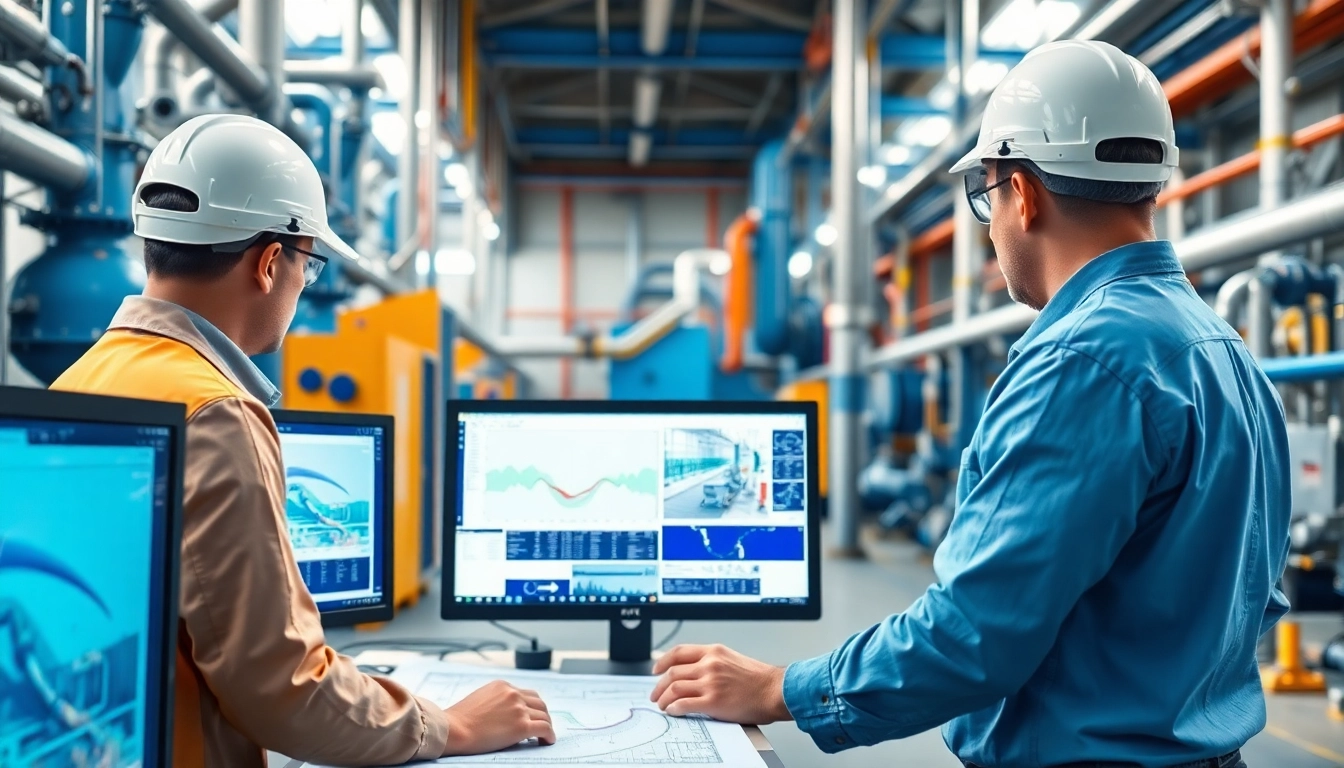The Landscape of Austin Construction
Austin, the capital of Texas, has blossomed into a vibrant hub of cultural and economic growth over the past few decades, leading to an explosive rise in construction activity. As the city grapples with a burgeoning population and a demand for both residential and commercial spaces, the construction sector is pivotal in shaping its future. Here, we delve into the intricate landscape of austin construction, exploring its evolving trends, the regulatory environment that guides it, and the economic drivers that catalyze development.
Current Trends Affecting Development
The Austin construction scene is dynamic, influenced by several notable trends. Firstly, urbanization continues to drive the demand for mixed-use developments that blend residential, commercial, and recreational spaces. These projects not only accommodate the growing population but also foster community engagement by creating vibrant neighborhoods.
Additionally, the shift towards sustainable construction practices is becoming more pronounced. Developers are now prioritizing eco-friendly materials, energy-efficient designs, and sustainable site management practices to mitigate environmental impacts and adhere to increasing regulatory demands. The integration of technology, such as Building Information Modeling (BIM), is enhancing project visualization and coordination, reducing the chances of costly errors and delays.
Regulatory Environment and Its Implications
Understanding the regulatory landscape is paramount for any construction project in Austin. Local ordinances, zoning laws, and building codes significantly influence project feasibility and timelines. The city’s codes focus on enhancing safety, ensuring accessibility, and promoting sustainability. However, navigating these regulations can be challenging, often delaying projects due to compliance checks and permit processes.
Moreover, recent modifications to the city’s zoning laws have introduced changes that encourage higher-density developments in specific districts. This regulatory shift aims to address housing shortages and stimulate economic growth while retaining Austin’s unique character. Developers must stay informed about these ongoing changes to exploit new opportunities and mitigate compliance risks.
Local Economic Factors Driving Growth
The local economy serves as a significant engine for construction in Austin. With an influx of tech companies and startups, the job market is thriving, attracting new residents seeking employment. This population surge drives the demand for housing, offices, and retail spaces. The construction industry is responding to this growth with a diverse array of projects designed to support both the existing community and newcomers.
Furthermore, the availability of substantial investment capital has fueled large-scale developments. Public-private partnerships are increasingly common, facilitating the funding of infrastructure projects that improve connectivity and stimulate further growth. Austin’s strategic location and favorable business climate continue to attract investors, innovators, and construction professionals alike, resulting in a rich tapestry of opportunities within the sector.
Finding Reliable Austin Construction Contractors
Choosing the right contractor is crucial in ensuring the success of construction projects in Austin. The city’s fast-paced growth has led to a surge in contractor options, but not all offer the same level of service or integrity. Thus, evaluating contractors effectively is paramount.
How to Evaluate Construction Companies
When vetting construction companies in Austin, consider the following criteria:
- Experience and Reputation: Look for contractors with extensive experience in local projects and a solid reputation. Online reviews, testimonials, and references can provide valuable insights into their reliability and expertise.
- Portfolio and Specializations: Review the contractor’s past work to ensure they align with your project’s requirements. Different contractors may specialize in residential, commercial, or industrial construction, so finding one that fits your needs is vital.
- Licensing and Insurance: Verify that the contractor holds the necessary licenses and insurance coverage. This not only protects you legally but also ensures that the contractor adheres to industry standards and regulations.
- Communication: Choose a contractor who communicates clearly and transparently. Effective communication can prevent misunderstandings and help manage expectations throughout the project lifecycle.
Essential Qualities of a Good Contractor
Beyond evaluation criteria, several intrinsic qualities define a good contractor:
- Integrity: A trustworthy contractor stands by their promises, delivers quality work, and is transparent about costs and timelines.
- Attention to Detail: The best contractors exhibit meticulous attention to every aspect of a project, from planning through execution, ensuring each element aligns with the overall vision.
- Problem-Solving Skills: Construction projects often encounter unforeseen challenges. A qualified contractor must demonstrate the ability to solve problems promptly and efficiently while minimizing disruptions.
Negotiating Contracts for Success
Once you identify and select a contractor, effective contract negotiation is crucial for safeguarding your interests. Here are essential strategies to ensure a favorable outcome:
- Clarify Expectations: Clearly outline project scopes, timelines, and deliverables within the contract to avoid scope creep and ensure both parties understand their responsibilities.
- Discuss Payment Structures: Agree on a fair payment schedule that reflects project milestones. This approach keeps the contractor motivated and financially secure.
- Include Escalation Processes: Specify procedures for addressing disputes or changes to the project, which can facilitate smoother resolutions without escalating tensions.
Innovations in Austin Building Practices
Innovation is at the heart of Austin’s construction evolution. Developers, contractors, and architects are increasingly adopting modern techniques and technologies to enhance building practices.
Sustainable Construction Methods
Sustainability is a crucial focus in Austin’s construction practices. Techniques such as green building certification (LEED), utilizing recycled materials, and implementing energy-efficient systems are becoming commonplace. These methods not only reduce environmental footprints but can also lower operational costs for property owners in the long run. Furthermore, as the city aligns with broader climate action goals, sustainable construction is likely to gain even more traction, influencing design choices and material selection in future projects.
Smart Technology Integration On-site
The advent of smart construction technologies is revolutionizing project management in Austin. Tools such as drones, IoT (Internet of Things) devices, and augmented reality are being leveraged to improve site monitoring, enhance safety protocols, and streamline workflows. For instance, drones can provide real-time progress reports, enabling managers to make informed decisions swiftly. Similarly, IoT devices can monitor environmental conditions on-site, ensuring compliance with safety standards and enhancing worker efficiency.
Utilizing Prefabrication in Projects
Prefabrication is gaining momentum in the Austin construction landscape, allowing for significant time and cost savings. By constructing building components off-site, projects can reduce on-site labor and expedite timelines. This method also enhances quality control since prefabricated elements can be built in controlled environments. As contractors become more adept at leveraging modular construction techniques, the potential for faster and more efficient project delivery grows, further addressing the local housing crisis.
Challenges Facing Austin Construction
Despite its growth, the Austin construction sector is not without its challenges. Understanding these issues is critical for stakeholders aiming to navigate the complexities of the industry successfully.
Supply Chain Issues Impacting Timelines
Global supply chain disruptions have affected construction timelines across the board. Materials shortages, manufacturing delays, and increased costs pose significant challenges for contractors and developers in Austin. Many projects are experiencing delays due to long lead times for essential materials such as lumber, steel, and concrete. As a result, effective supply chain management and fostering strong relationships with suppliers have become paramount for construction professionals looking to mitigate risks and adhere to project schedules.
Workforce Shortages in the Industry
Austin and many parts of the United States face a skilled labor shortage in the construction industry, exacerbated by the rapid pace of development. The lack of experienced workers impacts efficiency and quality and increases project costs. To counter this issue, many construction firms are investing in workforce development programs, apprenticeship initiatives, and partnerships with local trade schools. By creating pathways for new talent and enhancing existing worker skill sets, the industry aims to bridge the gap and ensure a competent workforce is available to meet growing demands.
Addressing Environmental Concerns
Environmental concerns are paramount in construction planning and execution. Construction activities can have adverse effects on local ecosystems, from habitat disruption to increased pollution. Austin’s developers are increasingly tasked with minimizing their ecological footprints through responsible site practices, sustainable material usage, and compliance with environmental regulations. Engaging environmental consultants during the planning phase can help identify potential issues and integrate solutions that protect natural resources while remaining compliant with local laws and community expectations.
Future Prospects for Austin Construction
The future of Austin construction is bright, with numerous prospects on the horizon. As the city continues to grow, coinciding with innovations and community engagement initiatives, the construction landscape will adapt and evolve in exciting ways.
Upcoming Major Developments
Several major developments are set to transform Austin’s skyline and contribute to economic growth. Projects such as luxury residential towers, mixed-use developments in urban core areas, and tech campuses highlight the diverse construction initiatives underway. These developments not only cater to the needs of a growing population but will fundamentally shape the urban landscape of the city, creating new opportunities for residents and businesses alike.
Investment Opportunities and Market Predictions
For investors, Austin’s real estate market presents significant opportunities. With a booming population and continued economic expansion, the demand for housing is projected to persist, creating favorable conditions for residential developments. Market predictions indicate that both single-family homes and multifamily apartments should remain profitable investment avenues. Additionally, commercial real estate projects, especially in technology and retail sectors, are poised for growth as the city embraces new businesses and startups.
Community Engagement and Involvement
Finally, community engagement is becoming an essential aspect of the construction process in Austin. Developers are increasingly prioritizing public input to ensure projects align with community values and needs. Engaging local residents during the planning stages fosters trust and support, ultimately leading to more successful outcomes. As Austin continues to grow, maintaining open lines of communication between stakeholders and the community demonstrates a commitment to creating sustainable, inclusive project developments that reflect the desires of residents.



